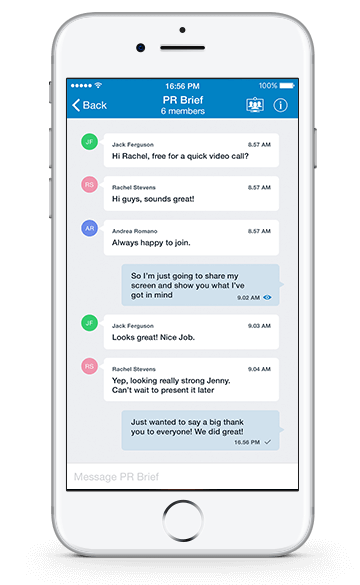
This is a box about the size of an old-fashioned desktop dialup modem that essentially provides the hardware necessary to turn an existing desktop into an HD video endpoint. StarLeaf's other product announcement was a little box called PT Mini (PT stands for Personal Telepresence). Meanwhile, Breeze can also run standalone on a laptop for mobility without the phone. Mark Loney said StarLeaf plans to implement a fixed-mobile convergence capability, so that you can unhook the tablet from the phone in the middle of a call and keep the call going uninterrupted that feature is still in the future, however. Yoking the tablet to the phone was a highlight of Cisco's failed Cius tablet, but in StarLeaf's case, the tablet isn't a proprietary enterprise device, it's a mass-market iPad that simply can take advantage of the phone-based call control that the desk set offers, by connecting to the phone via USB. One unique aspect of Breeze is that it can run on a tablet that's connected to StarLeaf's phone set for videophone calling (as in the image below). It's being offered as a $39 a month service off of StarLeaf's cloud-based videoconferencing offering (trials don't start until Q3 with GA scheduled for Q4).
STARLEAF CONFERENCING SOFTWARE
On mobility, StarLeaf has just announced Breeze, a software client that runs on either Windows or Mac PCs or on iPad. Nevertheless, Starleaf's latest offerings focus on the hot areas of video that Melanie Turek discussed in her post: Mobility and the desktop. You'll still find that name in Starleaf's literature, but when I got my latest briefing from Mark Loney, Starleaf's CEO, his talk and his slides opted for the more generic term "infrastructure" to describe the heart of the Starleaf system. One such company is Starleaf, a Sunnyvale-based startup that came out of the gate with an offering that was defiantly retro in its naming: the Telepresence PBX.

Vidyo drove the acceptance of Scalable Video Coding (SVC) for more cost-effective bandwidth usage, and other companies are thinking outside the box as well. Several newcomers have tried to capitalize on video trends around software, desktop improvements, and the generally increasing popularity of video.

While adoption in the past has largely taken place as a high-end enterprise application, the benefits of videoconferencing are now extending to mainstream users." Zeus recently recapped Polycom's repositioning, which aims to present that company as primarily a software player, while Melanie summarized Frost & Sullivan research that suggested, as she put it, that "The videoconferencing market is fast approaching an inflection point driven by high-quality and low-cost solutions combined with an escalating need for rich collaboration. The video marketplace is undergoing significant transition, mostly in the direction of software and less-expensive solutions.


 0 kommentar(er)
0 kommentar(er)
